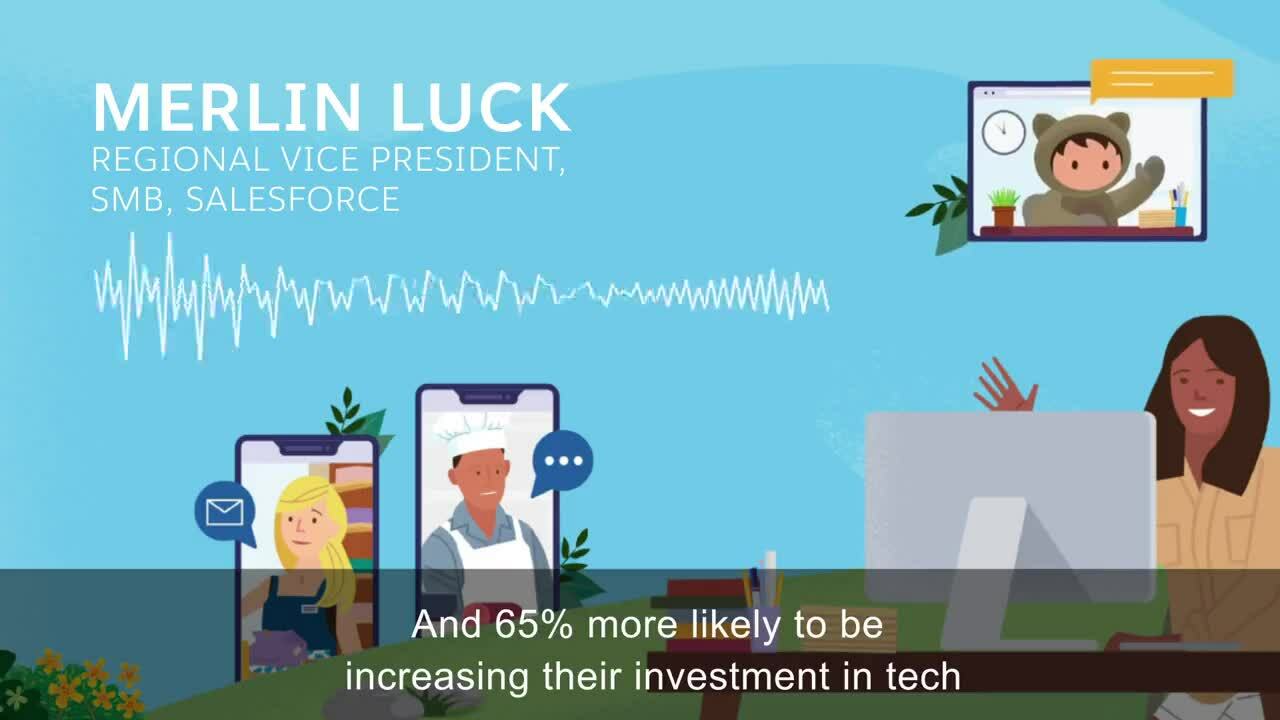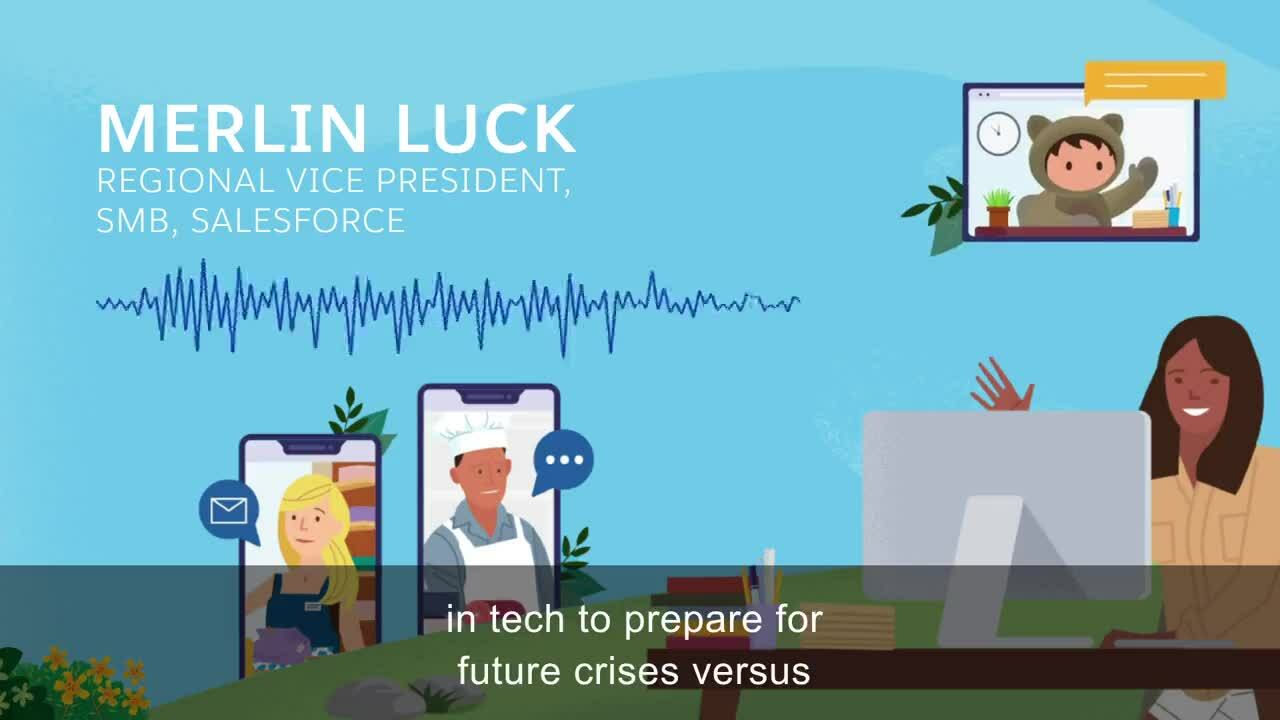What Can Australian and New Zealand Business Owners Learn From the Latest Small Business Trends?



Merlin Luck
It was back in March that we started surveying over 2,300 small and medium businesses across the globe, including hundreds in Australia and New Zealand, for our fourth edition of the Small and Medium Business Trends report. Of course, since then the world has changed, especially for small businesses.
In August, we conducted a follow up survey to determine the true impact of COVID-19 and what SMBs are doing to respond. It is these new insights that makes this year’s SMB Trends report valuable for business owners looking to recover and grow in 2021 – and how they can replicate what others have done successfully in their own businesses.
Despite the challenges of 2020, our research revealed that 72% of SMBs remain optimistic. That optimism is only slightly down from 80% last year, which is a testament to the mentality of SMBs. But our thoughts are with the 57% of SMBs who stated they are struggling to stay afloat, unfortunately revealing that resilience and hard work are no longer enough in such volatile times.
These immense challenges are rapidly accelerating the shift to digital business models. A new wave of innovation and entrepreneurship is here and will continue to build momentum as we emerge from this crisis. For small business owners, that means actively considering every part of your business and understanding where you can adapt and where you can innovate.
Let’s drill into that across the three key trends from the SMB Trend report.
Trend 1: Shifting customer expectations
Meeting customer expectations was identified as the second biggest challenge facing small businesses, after finances (for example, access to capital). As customer expectations intensified during COVID and consumer behaviour moved online – 60% of consumer interactions are now online (up 47% in less than a year) – small businesses needed to move from a reactive to proactive approach to technology to keep up with expectations.
But that is easier said than done. The intense pace that small businesses owners work at – being so busy working in your business, that it’s hard to work on your business – means that technology is often rolled-out in an ad-hoc manner. That was certainly my experience.
Before joining Salesforce almost 8-years ago, I ran my own small business, which I built from the ground up and grew to 13 employees for over 5 years. As we grew we introduced tech in this ad-hoc and reactive way, with no clear strategy for growth or plan to scale. We ended up with a Frankenstein of siloed tools and systems which limited our ability to automate business processes, unlock data insights to make smart decisions, and left us with no clear, 360-degree view of our customer. That translated into inefficiencies, sub-optimal growth and unnecessary risk – and ultimately the business collapsed.
When you put your blood, sweat and tears into a business, it’s devastating to see it fail – but you also learn. I remember joining Salesforce fresh from that experience and thinking ‘this is how a business should run’. Every employee, in every business function, connected on a unified platform:
- Around a single source-of-truth (one database)
- Automating and optimising business processes
- With end-to-end analytics and intelligence
- All mobile first (work from anywhere)
- And able to scale and adapt as the business evolves.
When you think about the impact a platform like that has on a business, it’s a game-changer in how a business orientates around its customers at scale. And with 88% of consumers stating that they expect the businesses that they interact with to accelerate their digital transformations in response to COVID, putting technology at the heart of your small business strategy also meets those rapidly shifting customer expectations.
Trend 2: Digital forward businesses prove more resilient
Our SMB Trends report revealed that during COVID growing businesses were 38% more likely to have technology at the core of their customer acquisition strategy and 55% more likely to have technology at the core of how they manage customer interactions. This was in comparison to stagnant or declining businesses.
Small businesses of all types have had to adjust and find new revenue streams, whether it’s through different products or services, or even business models. And that’s driving the divide between digital forward leaders and legacy players.
For example: Living Edge, a high-end designer furniture store, launched a new e-commerce experience that includes contextual live chat capability. Customers who engaged in live chat advice before purchase now account for 20% of all their online revenue. A Team Tuition, who pivoted their business to be 100% online tutoring to school students in response to COVID. This new digital-first model has allowed them to target and service regional based school students, which previously was not possible with a face-to-face only business. Now, with restrictions lifted across Australia, A-Team Tuition is able to maintain both in-person and online tutoring.
These two small businesses built resilience through technology. And those technology investments will continue to pay dividends as we return to a level of normality.
Trend 3: Preparing for future volatility
The new normal is that change is constant, and businesses that set themselves up with a focus on flexibility and adaptability will be the most prepared for the next unforeseen crisis. In fact, 47% of SMBs say they’ll operate in a modified fashion once we return to normal, with growing businesses 32% more likely to be investing in tech in preparation for future volatility.
But to replicate this in your own business, you don’t need to be digital native. You just need to become digital forward. You just need to put technology at the core of your business strategy, have a plan and take the first step.
When I think about what still inspires me at Salesforce (almost 8-years in), it’s helping SMBs go from a the kind of business I had (inefficient, losing customer centricity and making poor, gut-feel decisions) to the kind of business that Salesforce is: automated, customer-centric and data-driven.
So, for small business owners out there, it’s not a question of can you embrace tech? It’s a question of will you?
And that doesn’t have to mean going all-in, it just means taking the first step: One or two apps to optimise and innovate one or two parts of your business – but doing that with a plan.
So, that’s the call to action:
- Put technology at the core of your business strategy
- Get a plan in place (a roadmap)
- And take the first step

Keep your business growing and download the Small and Medium Business Trends Report.





















